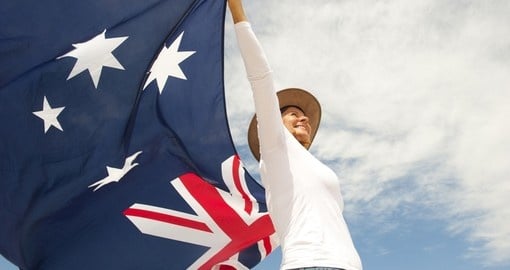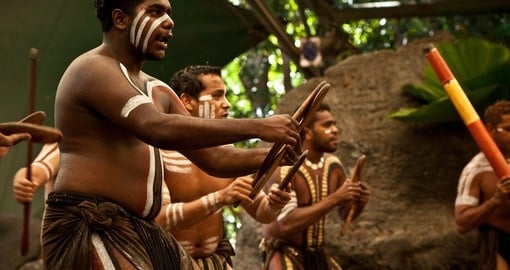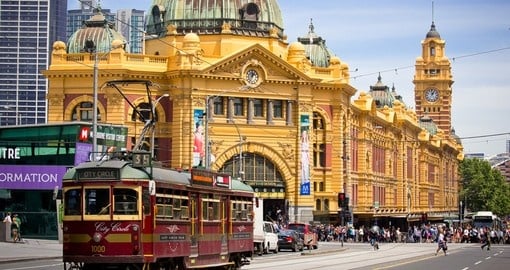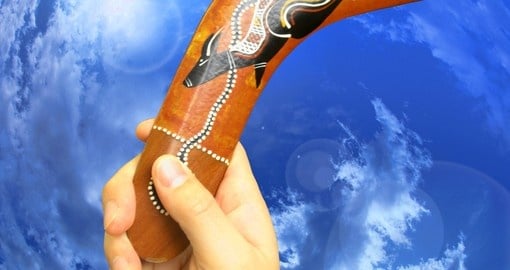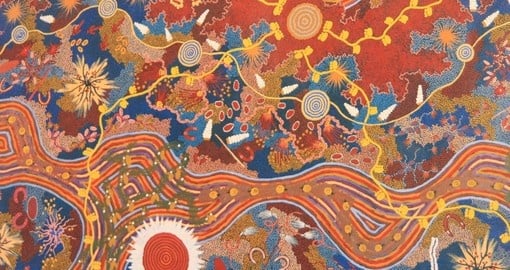Australian Culture and its Indigenous People, the Aborigines
Social Conventions
With more than 80% of Australia’s population living within 50km of the coast, the sun and beach certainly lend themselves to a very laid-back lifestyle. As a reflection of this, casual attire is generally accepted, with some places requesting formal dress. A friendly nation, Australians are known for their dry sense of humour and a deep love of the sport.
Language
While there is no official language in Australia, a recent census recorded that English is the only language spoken in 79% of homes in the country. Italian, Greek and Cantonese are the next most common languages.
Between 200-300, Indigenous Aboriginal languages existed prior to the arrival of European explorers. Only about 70 have survived, with only 18 languages currently being spoken by all age groups.
Religion
Australia has no official religion but is instead made up of various religions reflecting the multicultural nature of the nation’s population.
A 2006 census recognized the following religions: Christian, Buddhism, Islam, Hinduism, and Judaism.
Aboriginal Culture
Australia's indigenous people, the Aborigines, can trace back their culture 50,000 years. Aborigines have survived harsh desert conditions and have a detailed knowledge of the plants, animals and water sources available in the country.
For the traveller who wishes to gain an insight into their culture, there are a number of tours hosted by or arranged in conjunction with Aboriginal communities. Many tours feature Aboriginal folklore, the Dreamtime, an epic tale of the land and how it was formed. To keep their folklore alive, the Aborigines re-tell their stories in songs, fables, dances and cave paintings. On many tours, cave paintings and stone carvings can be visited.
Bark paintings, fabrics, ceramics, jewellery, clothing and musical instruments can be purchased at gift and souvenir outlets in major cities and some outback areas.
Major Aboriginal areas rich in cultural heritage are Arnhem Land and Uluru in the Northern Territory, Quinkan Reserves and Kuranda in Queensland, Bibbulmun Trek and the Kimberley in Western Australia, Ku-ring-gai Chase and Mootwingee National Parks in New South Wales, Tandanya in Adelaide, South Australia, The Grampians (Gariwerd), Lake Condah Aboriginal Mission in Victoria and Namadgi National Park in the Australian Capital Territory.
It is generally thought that Aborigines have been living on the continent for the last 50,000 years, originally migrating from Indonesia. The oldest skeleton found in Australia was discovered at Lake Mungo in southwest New South Wales, is believed to be 38,000 years old, and bears traces of ceremonial ochre. This is thought to be the oldest sign of ochre use ever discovered.
Unlike most other races, Aboriginals were not cultivators, relying instead on a form of controlled burning of vegetation known as 'fire-stick farming. They did not develop a sense of land ownership, although Aboriginal children were taught from an early age that they belonged to the land and must respect tribal boundaries. Tribes returned to particular sites to bury their dead. Some areas were designated sacred sites because of their association with the Dreamtime, the time when the earth was formed and cycles of life and nature were initiated.
Aboriginal legends, songs and dances tell of powerful spirits who created the land and people during the Dreamtime. There is no written Aboriginal language and most of the 600 tribes spoke different dialects and languages. They rarely met except on ceremonial occasions. The tradition of the Dreamtime, however, was a unifying force and rock paintings depicting this creation period can be found dotted throughout the country. Some of the most striking and best preserved of these can be viewed at rock galleries in Kakadu National Park and other parts of northern Australia.
The arrival of Europeans gradually brought an end to the traditional Aboriginal way of life, when settlements began to encroach on tribal lands. Today, most Aborigines live in cities and towns or in isolated settlements near tribal lands. Few continue their nomadic ways. In recent years, white Australians have become more sensitive to the plight of Aborigines, resulting in increased health and educational services, greater recognition of Aboriginal land rights and a growing appreciation of Aboriginal culture. Specialized galleries display Aboriginal art, tools, musical instruments and artefacts. These are highly valued and avidly sought by collectors all over the world.
ABORIGINAL WORDS AND CONCEPTS
Around 250 separate languages have been recorded throughout Australia. The following is a handful of commonly used Aboriginal words, as well as concepts which briefly describe the Aboriginal experience.
BARRAMUNDI - a large river fish found in the warm, northern waters of Western Australia, Northern Territory and Queensland. It is highly valued for its wonderful flavour by both Aborigines and Europeans.
BILLABONG - a small pool or lagoon.
BOOMERANG- used as both a weapon and a clapping instrument to accompany songs and dances.
BORA- initiation ceremony at which boys are admitted into the responsibilities of manhood. Bora Rings, or initiation grounds, occurred in pairs, with a larger ring and a smaller ring joined by an external pathway. The boys were brought to the larger ring by a female relative and handed over to the older men who took them to the smaller ring for the secret parts of the ceremony.
COOEE - a long, shrill call originally used by an Aborigine to communicate with someone at a distance. It has been widely adopted as a signal, especially in the bush.
COOLAMON - wooden vessel for holding water, seeds or a baby, often made from a hollowed knot of a tree. Also called a pitchi.
CORROBOREE - a dance ceremony which may be sacred or informal. In corroborees of ritual significance, the dancers act out ancestral scenes.
DIDGERIDOO - long cylindrical wind instrument - usually 90-150 cm in length - originally from Arnhem Land - known as the Yidaki. Made of wood and often painted with the owner's own totem, it produces a low-pitched, resonant sound.
DREAMING - the spiritual identification of an individual or an object with a place, or with a species of plant or animal. A Dreaming Path is a place or route of Dreamtime significance along which Dreamtime ancestors travelled.
DREAMTIME - the time of creation; a set of events beyond living memory which shaped the physical, spiritual and moral world. The Dreamtime stories tell of the time when the Ancestral Beings rose from the earth in animal and human forms and created the landscape as we now see it. Dreaming is an English word, and each Aboriginal language has its own word with the same or similar meaning.
GUNYAH - a temporary bark shelter built by traditional Aborigines.
KOORI - the name Aborigines from the regions that now encompass most of New South Wales and Victoria use to refer to themselves.
MIMI - the spirit people depicted in rock and bark paintings from western Arnhem Land. Believed to be trickster spirits, the Mimi disappear into the rock walls of caves and shelters and sometimes leave their shadows behind, which appear as paintings. Paintings of the Mimi are characterized by their graceful, elongated shape.
NULLA NULLA - a hardwood club used in fighting and hunting.
PUKAMANI - ceremonial burial poles from the Tiwi communities on Bathurst and Melville Islands, north of Darwin.
RAINBOW SERPENT - a widely venerated spirit of Aboriginal mythology.
WALKABOUT - a journey on foot, as undertaken by an Aborigine in order to live in the traditional way. It originally referred to a hunting and gathering trip that would last from a few hours to a few days.
WOOMERA - wooden spear thrower.
Blog Article
Top 5 Places to Learn About Aboriginal Culture in Australia
Australia Vacation Information
At Goway we believe that a well-informed traveller is a safer traveller. With this in mind, we have compiled an easy-to-navigate travel information section dedicated to Australia.
Learn about the history and culture of Australia, the must-try food and drink, and what to pack in your suitcase. Read about Australia's nature and wildlife, weather and geography, along with 'Country Quickfacts' compiled by our travel experts. Our globetrotting tips, as well as our visa and health information, will help ensure you're properly prepared for a safe and enjoyable trip. The only way you could possibly learn more is by embarking on your journey and discovering Australia for yourself. Start exploring...book one of our Australia tours today!
Extend Your Stay
Consider an additional stopover to your Australia vacation at one of Goway's South Pacific destinations. You can choose from our selection of New Zealand vacation packages, Tahiti vacation packages or stay at one of our Fiji resorts or perhaps take a Cook Island vacation. This can be done stopping over en route to or from Australia.
Book your Australia tour with Goway!
 With more than 250 Australian tours and experiences, Goway’s Downunder wizards can offer you many ways to explore and enjoy Australia. Choose from a simple city stopover, see the country highlights on one of our classic itineraries, enjoy an Island stay, a self-drive holiday, a Holiday of a Lifetime and more. We want to be your first choice when next you go globetrotting.
With more than 250 Australian tours and experiences, Goway’s Downunder wizards can offer you many ways to explore and enjoy Australia. Choose from a simple city stopover, see the country highlights on one of our classic itineraries, enjoy an Island stay, a self-drive holiday, a Holiday of a Lifetime and more. We want to be your first choice when next you go globetrotting.
Get a Trip Quote Order a Brochure






